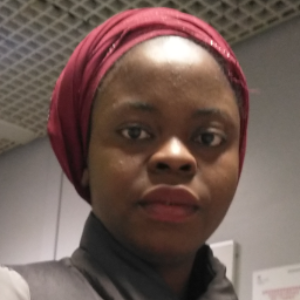Title : Gold nanoparticles as an efficient adsorbent for the removal of heavy metals from aqueous solution
Abstract:
Adsorption of Cu and Ni (II) ion by gold nanoparticles was successfully achieved by synthesizing gold nanoparticle by chemical reduction with sodium citrate tribasic and cysteine as the capping agent. The synthesized nanoparticles were characterized by Fourier Transform Infrared spectroscopy, UV visible spectroscopy, Scanning Electron Microscopy, Powder XRay Diffractometer, Inductively Coupled Plasma mass Spectrometry, Thermal Gravimetric Analysis and porosimetry. The result obtained from Fourier Transform Infrared spectroscopy revealed that there are some appearance and disappearance of some peaks which indicate the formation of gold nanoparticles, the result obtained from Inductively Coupled Plasma Mass Spectrometry revealed that the nanoparticles is 63 percent gold.
The observation from the thermal analysis revealed that the gold nanoparticles is 97% stable at 625 oC as it would be expected for gold. The result from Scanning Electron Microscope revealed the structural morphology to be spherical monodispersed and porous, the porosimetry analysis revealed the size of the nanoparticles to be smaller in size and also falls within the nano. The UV visible spectroscopy reveals the information of the synthesized nanoparticles to be suitable for colorimetric sensing of the two metal ions.
The physiochemical study revealed that the colorimetric sensing of cadmium and lead ions by gold nanoparticles at different concentrations ranging from 0.5 -20ppm.The maximum uptake was achieved with 9.8mg/g at 20ppm for Cu(II) ions and 11.82mg/g at 20ppm for Ni(II) ions. The effect of contact time was studied for the optimal concentration for reaction time ranging from 5minutes to 24 hours .The optimal uptake occurs at 1hour and maintains stability till 24hours reaction time with 4.45mg/g for Cu(II) ion and 7.08mg/g for Ni(II) ions was being observed at 1 hours reaction time and remaining stable till 24hours reaction time for the two ions .The effect of pH (3,6,9 and 12 )on the adsorption of Cu(II) by gold nanoparticles revealed that maximum uptake was found at a PH of 9 with uptake of 9.8mg/g while maximum uptake occurs for Ni(II) ions at a pH of 12 with 10.6mg/l The effect of adsorbent dose was also studied at (0.01g,0.03g and 0.05g). The result shows maximum uptake for Cu(II) ion at a dose of 0.01g with uptake of 4mg/g while for Ni(II) ions at 0.01g with uptake of 4.5mg/g Study from effect of temperature (30,60 and 90oC )shows that the maximum uptake for Cu(II)ions occurs at 90 o C with maximum uptake of 13mg/l and for Ni(II) ions occur at 90 o C with maximum uptake of 15mg/g.
Audience take away:
- How to synthesize nanoparticles.
- Information on the nanoparticle’s characterization.
- Application of nanomaterial in tackling environmental problem.



